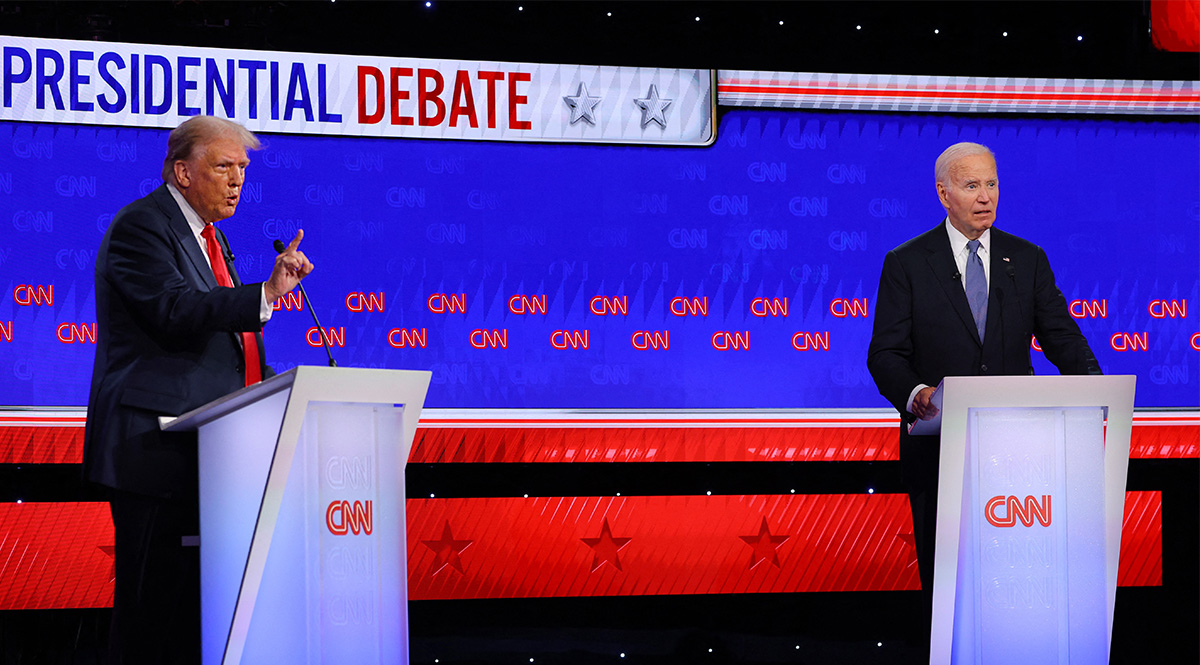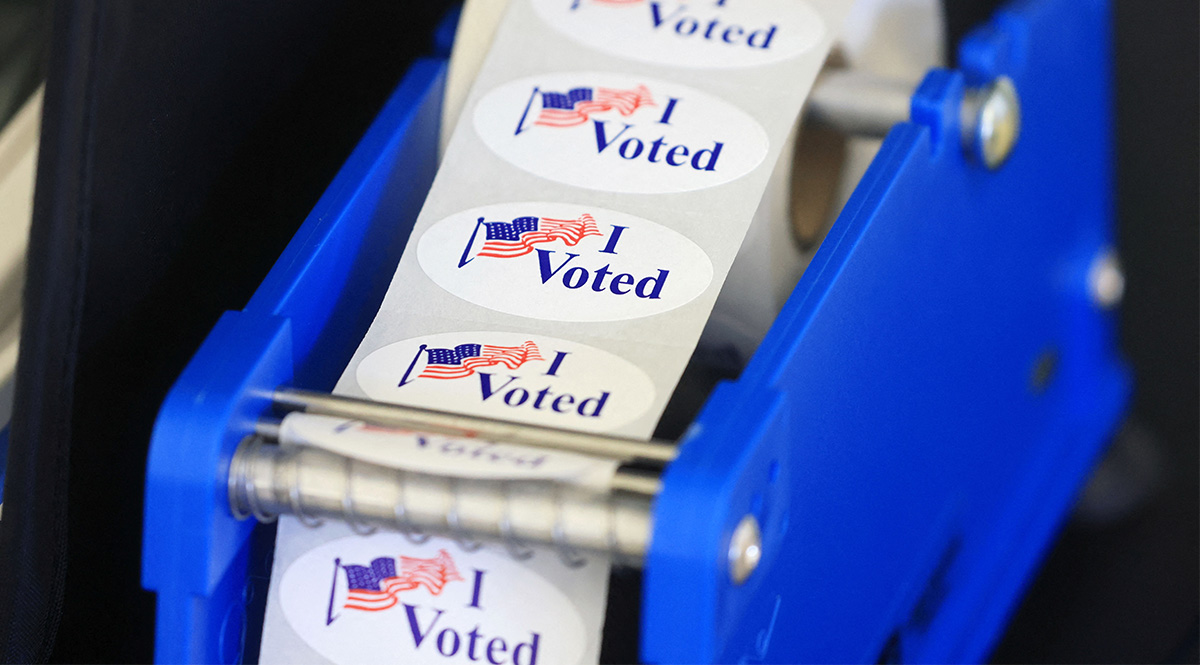Biden-Trump Debate Raises Big Question Mark over U.S. Election
On 27 June, the first election debate was held between the Democratic and Republican party candidates for the U.S. presidency: Joe Biden, who is seeking re-election, and Donald Trump, who is campaigning for election to a second term. The debate was held two months earlier than normal (usually they are in September), mainly because of the informal conclusion of the primaries already in March and the focus of media and public attention on the direct competition between the two main candidates. Although Biden’s statements can be assessed as more substantive, Trump fared better in terms of image, which may be important for potential voters.
 Brian Snyder / Reuters / Forum
Brian Snyder / Reuters / Forum
What were the first impressions and comments after the debate?
Most viewers and commentators, including those affiliated with the Democratic Party, pointed to a Trump victory in the debate. Biden’s presentation was mostly damaging to his electoral chances, with many seeing him physically unfit to continue in office due to his age. The goal of Biden’s staff was to present the president from his strong side, as a bright, dynamic politician, as he was during the State of the Union Address in March this year. The effect this time, however, was the opposite of what was intended. Biden looked confused, often losing his thread of argument, getting confused and failing to respond to inaccurate data provided by Trump. In a poll conducted afterwards by CNN, which hosted the debate, 67% of viewers agreed that Trump was the winner. Concerns about Biden’s fitness have become so serious that U.S. media are reporting consultations within the Democratic camp about the future of his candidacy. The issue of Biden’s age and whether he is fit to continue for a second term may prove to be the dominant theme of the campaign, and it may prove impossible for his staff to neutralise this negative image.
What were the main areas of contention during the presidential debate?
The topics addressed during the debate largely reflected the priorities signalled by voters in opinion polls. Biden and Trump argued over economic issues, including the dynamics of jobs lost during the pandemic and gaining them afterwards, reducing taxes and imposing new ones, and lowering the cost of living for Americans, including eliminating burdens borne disproportionately by racial minorities, such as cancelling student debt. Access to abortion and irregular immigration to the U.S. were also important elements of the debate. The candidates also argued on the issues raised in court cases, which, for Trump, concern him directly, while for the incumbent president, are focused on his son Hunter Biden. The debate also addressed foreign policy issues. Differences over the two candidates’ approaches to cooperation in NATO resonated strongly, including Trump’s failure to answer Biden’s question about whether he would withdraw the U.S. from the Alliance. At the same time, Trump asserted again that under a second administration there would have been no attack by Russia on Ukraine, which is currently suffering huge and, in his view, unnecessary losses, and the U.S. significant costs associated with supporting Ukraine. In doing so, he gave false, inflated figures about the scale of U.S. support (“$200 billion” while in fact it is closer to $110 billion). He announced that he would seek to end the war as soon as possible. Similarly, he portrayed the Hamas attack on Israel as evidence that Biden is perceived in the international space as a weak president, a perception he argued was visible in the chaotic U.S. withdrawal from Afghanistan in 2021.
Have voters’ attitudes towards the candidates changed in recent months?
Support for both candidates in nationwide polls has remained essentially unchanged in recent months. This means that voter sentiment has not been affected by Biden’s election promises in the State of the Union Address, the president’s strengthening of border protections while also making it easier for immigrants who have been in the U.S. for many years to apply for a green card (legalisation), or Trump’s conviction in the New York criminal trial for falsifying business records. Averaged polls (New York Times) weighting the results of individual opinion polls show 46% support for Trump and 45% for Biden. In politically undecided states (so-called swing states), Trump maintains a lead over Biden: 5 percentage points in Arizona, Georgia, and North Carolina; 4 p.p. in Nevada; 2 p.p. in Michigan and Pennsylvania; and 1 p.p. in Wisconsin. At the same time, both candidates are suffering from negative sentiment among a significant portion of the public. As much as 25% of voters (so-called double-haters) have unfavourable opinions of both candidates, compared to only 13% in 2020.
How important are other candidates in the election?
Although independent candidate Robert Kennedy Jr. did not qualify for the debate, his inclusion in the nationwide polls (with an average support of 8%) is taking support away from the Democratic and Republican candidates by a similar margin (41% for Trump and 39% for Biden). However, polls from swing states show a bigger loss for Biden, deepening to 7 p.p. in Georgia and North Carolina, 6 p.p. in Nevada, and 3 p.p. in Pennsylvania. In Arizona and Wisconsin, the gap with Kennedy included between Biden and Trump remains unchanged, while in Michigan, Biden is behind by just 1 p.p. Kennedy remains the “third party candidate” with the greatest potential to take votes away from Biden and Trump. However, Green Party candidate Jill Stein (a doctor and social-climate activist) and Cornel West (a leftist philosopher, theologian and social activist), who formed the Justice for All Party for the campaign, are also running for president. Both Kennedy, as well as Stein and West, however, will not appear on the ballot in all states, only in a few or as many as a dozen where they succeeded in registering their candidacy.
What is the probable course of the campaign?
The debate strengthened Trump and deepened doubts about Biden’s fitness and effectiveness in persuading voters, which could result in weakening support for the incumbent president. Although a natural step to reduce his presence in the campaign would be to get Vice President Kamala Harris more involved, her public support is as low as Biden’s. For this reason, some Democratic Party politicians and activists may focus on proposing another, stronger candidate who would have a better chance of winning against Trump. The next key dates in the election cycle are the party conventions, where candidates formally receive the nomination to represent their party in the presidential election. The Republican convention will be held on 15-18 July in Milwaukee, Wisconsin, while the Democrats are holding theirs in Chicago, Illinois, on 19-22 August. An alternative Democratic candidate would have to be named and approved by votes of the delegate by the convention. The second presidential debate is scheduled for 10 September. The autumn elections, in which Americans will vote for candidates for president, both chambers of Congress, and numerous state and local offices, are scheduled for 5 November. Most states, however, allow for early voting by mail or absentee voting, which begins in October and sometimes even in September. These options are used primarily by party-affiliated voters who have made their decisions long before Election Day. Therefore, the key moments in the campaign that will most strongly affect the decisions of undecided voters will be in September and October.



.jpg)

